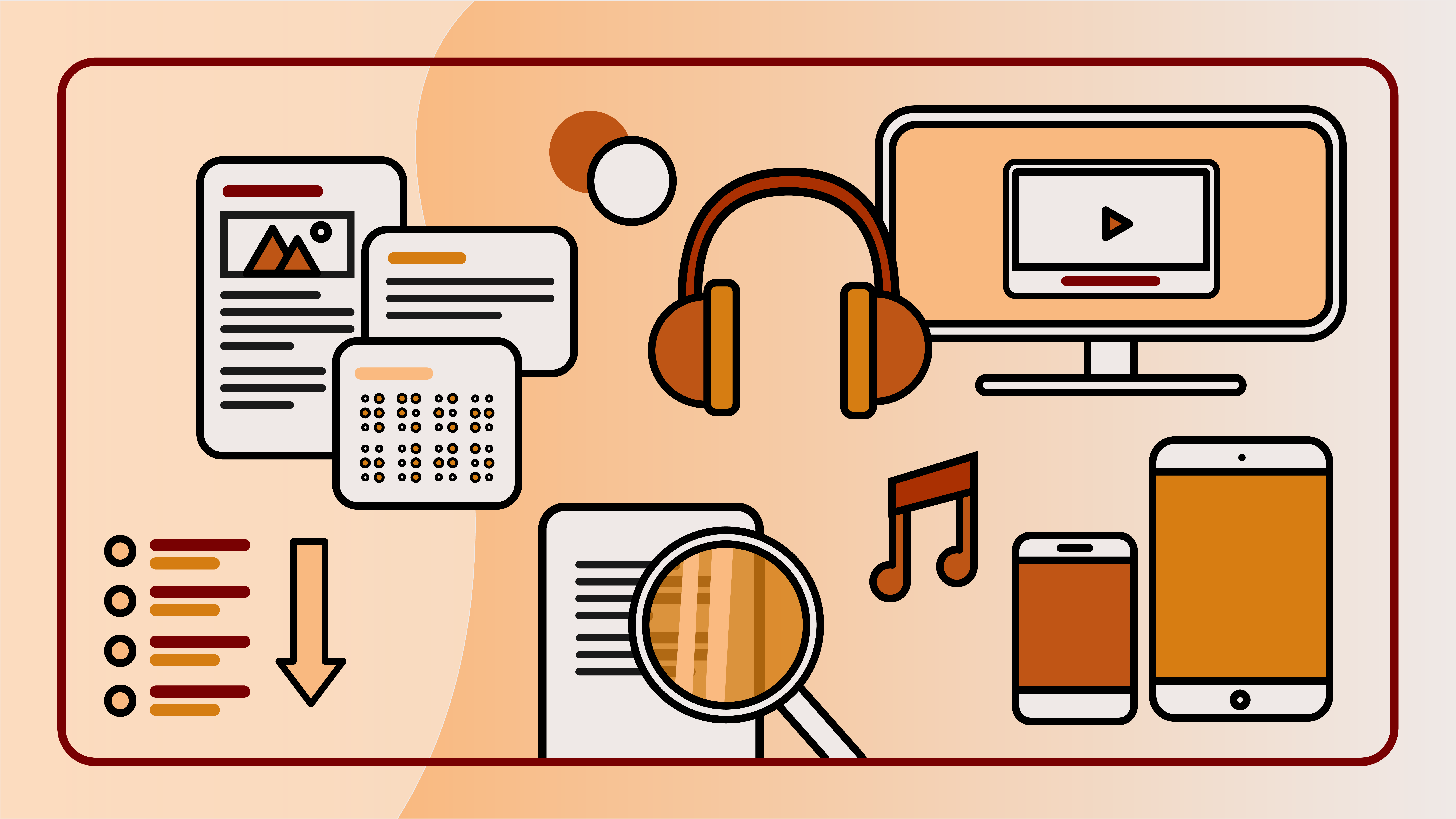General

In digital distance education, some students may not be able to use all the material provided. Not only for the sake of inclusion but also for the educational effectiveness, we should deliver and create accessible educational material. Accessible material is compatible with assistive technologies, suitable for most students and easy to adapt for those to whom it is not.
Here, you may find useful information for the creation of accessible content which mitigates issues related to access and usage. For issues related to getting the educational material go to Implement inclusive online teaching and Learning management systems pages.
Related topics
Key tips
- Sources of accessibility issues
-
Issues may appear when students interact with the educational material and are trying to:
- Get E.g. the IT system for the delivering of the educational content is not accessible and the student is not able to reach it.
- Open E.g. the student does not have the device or assistive technology compatible with the educational material.
- Use E.g. The content is useless to some students because it was created without following the basic accessibility best practices like “Use a text size big enough to be easily readable and allow the user to customise this size”.
- Empathise with students
-
- Know the assistive technologies that students may use. See: Understand student accessibility needs.
- Know how students use the assistive technologies. See: Understand the uses of the assistive technologies.
- Assure that students have the right device and assistive technology.
- Choose appropriate digital formats
-
- Aligned to the learning goals.
- Book-like material that is not aimed to be edited. See: Publish accessible digital content.
- Office-like / editable documents. See: Accessible office documents.
- Interactive materials like web applications and specialised software. See: Web.
- Easy to use and available for students.
- Prioritise well known formats. This makes easier to:
- assure all students can open and use the educational material and
- focus on learning goals.
- Accessibility enabled.
- Make sure the format of choice is accessible.
- Students may use Assistive Technology (AT) to access the content. The AT delivers the learning material in a way that matches the specific abilities of the student. To enable ATs to do their job, the educational material has to be “Accessible”. This means it should allow to:
- Display customisation. E.g. resizable text, customised colour scheme and typeface, etc.
- Use of standard assistive devices. E.g. students can use screen readers to interact with the material. See: Understand the uses of the assistive technologies.
- Digital formats for each purpose:
- Editing mostly-text content: Word, Google Docs, Plain text. See: Accessible office documents and Accessible text.
- Presenting: PowerPoint, Google Slides. See: Digital slides.
- Working with data in tabular form: Excel, Google Sheets. See: Spreadsheets.
- Interactive content: Web.
- Publishing static read-only content: PDF, EPUB.
- Aligned to the learning goals.
- Create accessible digital content
-
- Know the different types of digital content and the accessibility issues they may carry. See: Accessible digital content.
- Choose the right creation tool that outputs accessible educational material. See: Tools for creating accessible content.
- Know how to issue accessible digital publications. See: Publish accessible digital content.
- Verify the accessibility of the educational material. See: Check the accessibility of the educational material.